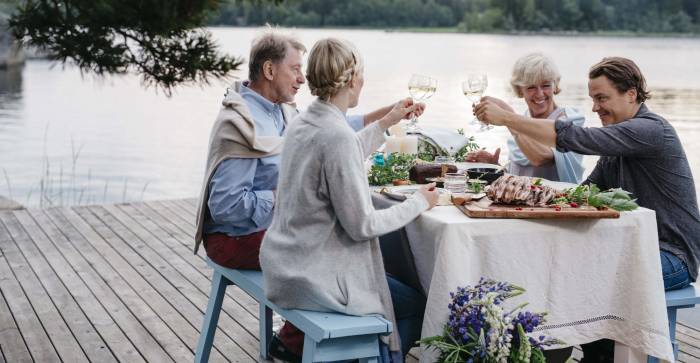Finnish archipelago emerges as a top destination for culinary tourism and local food experiences
Chefs blend traditional Nordic ingredients with modern techniques, drawing visitors to islands and coastal cities for unique dining adventures
2025-07-22

The Finnish archipelago, one of the largest in the world, is gaining recognition as a destination for travelers interested in gastronomy. Stretching along the southwestern coast of Finland, this network of thousands of islands offers a unique blend of local ingredients, traditional recipes, and modern culinary techniques. The region’s cuisine draws heavily from the surrounding Baltic Sea and the forests that cover much of the landscape.
In recent years, several restaurants have helped put the archipelago on the map for food lovers. One notable example is Back Pocket, located on the island of Korpo. Chef William Hellgren, who grew up on Korpo and trained in Stockholm, returned to his roots to take over his family’s hotel and open this restaurant in 2016. Together with his partner Sandra, Hellgren has developed a menu that changes with the seasons and highlights local produce such as wild herbs, rhubarb, new potatoes, asparagus, apples, plums, mushrooms, and root vegetables. While he uses ingredients from the archipelago, Hellgren also incorporates Asian influences—especially Japanese flavors—into his dishes. He describes his approach as playful and non-traditional, combining umami notes with the creamy textures typical of Nordic cuisine.
Traditional foods remain central to the archipelago’s identity. Smoked fish, herring, and malted bread are staples that appear on many menus. Dishes like Skagen—a shrimp salad served on dark bread—are popular choices for both locals and visitors. The simplicity of these foods reflects the region’s history and its reliance on what can be harvested from land and sea.
The city of Turku serves as a gateway to the archipelago and is home to Oobu, a restaurant located in a historic building by the Aura River. Oobu focuses on fresh seafood and modern interpretations of local classics while maintaining respect for tradition. In Vaasa, another coastal city with strong ties to the archipelago culture, HEJM restaurant follows a similar philosophy. Its three chefs are committed to using seasonal products from Ostrobothnia—ranging from fish and vegetables to meats and locally produced beverages. They aim to create an experience that goes beyond food by offering a relaxed atmosphere and attentive service.
On Pellinge Island in eastern Finland’s Gulf region, Pellinge Marina opened recently with a focus on authentic archipelago flavors and locally sourced ingredients. The restaurant features fresh seafood and offers guests views of the water along with live music on its terrace during summer months. Visitors can also stay overnight in luxury villas or boutique hotel rooms.
Helsinki’s proximity to the sea means that several islands near the capital host restaurants specializing in Nordic cuisine with maritime views. NJK Restaurant stands out for its long history—it opened in 1900—and its location on a small island just minutes by boat from downtown Helsinki. Known for its seafood dishes and romantic setting, NJK is especially popular at the end of summer when crayfish season begins.
A new addition for summer 2025 is TAR, a high-end restaurant situated on Tervasaari Island near central Helsinki. The name refers to tar—a product historically exported from Finland’s pine forests—and signals a connection to Finnish heritage. TAR is quickly becoming recognized as one of Helsinki’s leading culinary destinations.
The Finnish archipelago continues to attract attention for its combination of natural beauty and distinctive food culture. With chefs drawing inspiration from both tradition and innovation, visitors can expect memorable meals that reflect the character of this unique part of northern Europe.
Founded in 2007, Vinetur® is a registered trademark of VGSC S.L. with a long history in the wine industry.
VGSC, S.L. with VAT number B70255591 is a spanish company legally registered in the Commercial Register of the city of Santiago de Compostela, with registration number: Bulletin 181, Reference 356049 in Volume 13, Page 107, Section 6, Sheet 45028, Entry 2.
Email: [email protected]
Headquarters and offices located in Vilagarcia de Arousa, Spain.